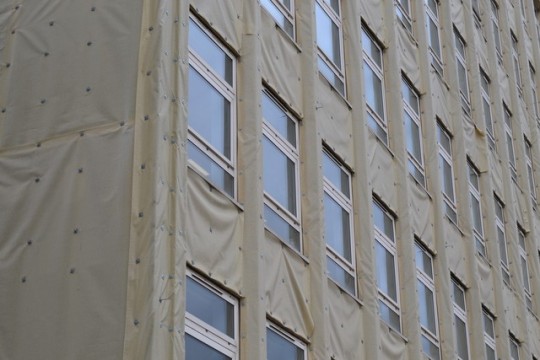Video
vimeo
3 notes
·
View notes
Photo

Ana Mendieta, Anima, Silueta de Cohetes (Anima, Silhouette of Fireworks), 1976.
2K notes
·
View notes
Text
Artist: Craig Kauffman

Craig Kauffman was perhaps the best known of the L.A. artists of the 1960s who experimented with transparency, translucency and colour to create an intrigue within their minimal art. Predominantly a painter, his Untitled 1969 pieces have been said by Susan L. Jenkins to “exist in a space between painting and sculpture” and it is this interplay between light, form and colour defines these sculptures, marking them as painting in a distilled sense.
Kauffman has commented on these that “the piece is less important than what it is doing to the wall”. Here, the sculptors’ three dimensional duty is called upon to persuade to viewer to look closer, the bold colour within the work acting as a playful invitation. This curiosity is similar to Alexander Calder’s mobiles, which could be described similarly as the piece being somewhat less important than what is being done with the space. Both Calder and Kauffman’s work utilises colour and curvature, distinguishing them from their minimalist contemporaries who primarily deal with the rigid, straight and dark. The likes of the boxed lines present in Donald Judd’s work, or the heavy brick propensity for moral seriousness in the likes of Carl Andre and Brutalism in the architecture of the time, are nowhere to be seen in work that arguably has more to do with Matisse than it does minimalism.



In Portraits, John Berger analyses Matisse use of colour: “He repeatedly declared that colour must serve expression. What he wanted to express was ‘the religious feeling’ he had towards sensuous life - towards blessings of sunlight, flowers, fruit, sleep.” In today’s work, talk of “minimalism” usually exists in relation to this kind of simple life: a quick Pinterest search will show loft apartments stripped to just the simplicities listed by Berger, a kind of twenty first century asceticism that has evolved among the privileged to counter our busy modern lives of excess. These images, however, seldom feature colour. In the same way obituaries described Matisse’s work as “charming”, colour is seen as an indulgence, jovial and self-interested. Kauffman’s sculptures adopt the simplicity apparent in Matisse’s scenes, a minimalist preoccupation with perception rather than restriction per se.

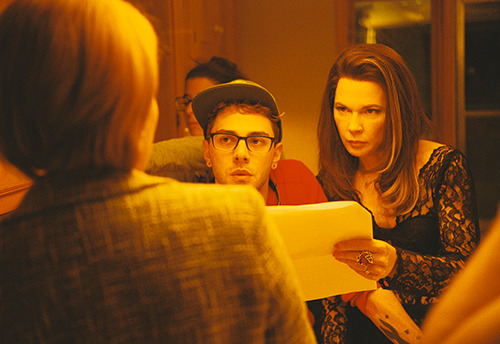
Kauffman’s pieces also evokes the gels used in cinematography, used to emit colour onto a scene in the way that they project onto the wall behind. There is something ephemeral and transitory about it, the window of time that pieces are brought to life within, fully realised only through that “blessing” of sunlight Berger speaks of. Coming back to cinema, one film that comes to mind is Xavier Dolan’s Mommy, in which the director takes advantage of this equipment to convey emotion through colour, much to the disdain of reviewers such as Glen Kenny, begrudgingly reviewing the auteur on RogerEbert.com: “The first minutes of the film are replete with nifty little colour tricks, focus fripperies, and lens flares. The sound mix, too, is very “Hey!”” Here, the assertion is that a Dolan’s use of colour is akin to the more jarring inclusion of the likes of Dido, Celine Dion and Counting Crows in the film’s soundtrack. Film is supposed to be more serious, to hold itself in higher regard. Evidently, film is where painting was at the turn of the twentieth century when Matisse faced the same “Hey!” accusation.
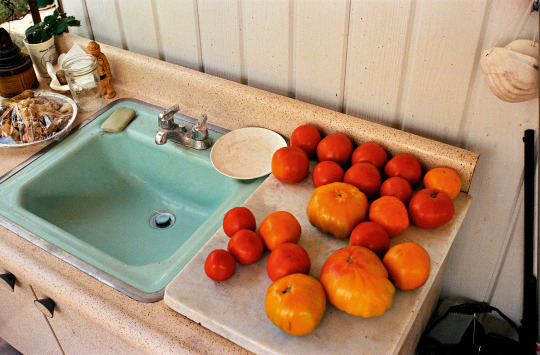
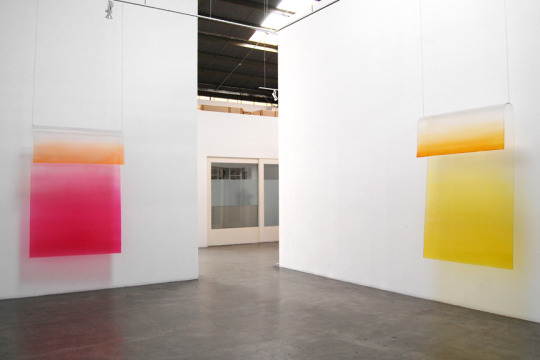
For Kauffman and Calder, their success lies in their ability to establish colour as an important facet of minimalism, in the same way William Eggleston made space for colour photography within his field. Towards the end of his career, Matisse had achieved simplicity with colour, yet there was still a case to be made. Berger writes on this that “colour becomes the entirely dominant factor. His colours seem neither to embellish nor change the forms, but to uplift and carry them.” With Matisse’s cut outs, there is a kinetic element similar to Calder’s mobiles, which essentially feature these shapes, only suspended. In Kauffman’s folded pieces, colour is uplifted and carried. The pop artists of the time used subversion - or as Jenny Holzer would put it, “use what is dominant in a culture to change it quickly” - to lift colour from the gaudy advertisement and position it in as potentially high brow fine art. Kauffman, however, succeeds in creating a new vision in which colour exists in its own right.
#research#art#art criticism#minimal#minimalism#minimal art#craig kauffman#william eggelston#alexander calder#pop art
2 notes
·
View notes
Photo



Lara Almarcegui ‘Bauschutt Hauptraum Secession’ Vienna 2010
267 notes
·
View notes
Photo
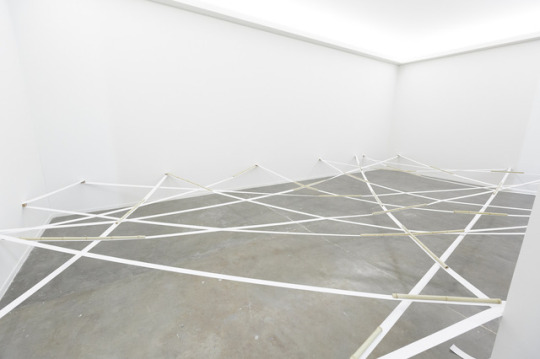
Blum & Poe, SP-Arte, São Paulo (6–9 April 2017). Courtesy Ocula. Photo: Tiago Lima.
23 notes
·
View notes
Photo
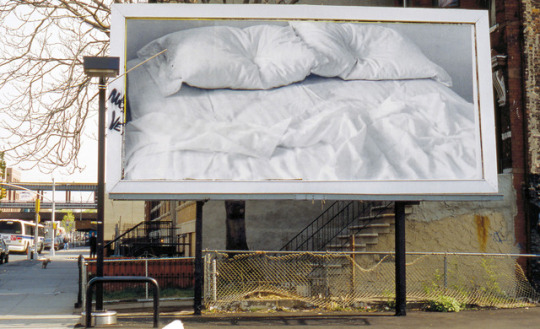
“When people ask me, ‘Who is your public?’ I say honestly, without skipping a beat, ‘Ross.’ The public was Ross. The rest of the people just come to the work.” For the last several years of his life and career, Felix Gonzalez-Torres devoted much of his artmaking to his partner Ross Laycock, who died from AIDS in 1991, five years before the artist would meet the same fate in 1996. Many of Gonzalez-Torres’ famous candy spills were meant to reference the gradual depletions of a sick body that he witnessed first hand as his beloved partner died; many of them were in fact calibrated to his precise weight. After emigrating to New York in 1979 and soon after enrolling in the Whitney ISP, Gonzalez-Torres met Laycock at Boy Bar in the East Village; the two remained together through various stints in Toronto and Los Angeles until Ross’s death, which devastated him. The intensely personal nature of Gonzalez-Torres’ oeuvre is precisely the thing that gives it a universal potency. Its mournful tone and minimalist gestures are at once specifically located in place, time, and politics, yet open to vast worlds of grief, loss, and emptiness. He reminds me of what Jennie C. Jones once said of the minimalist gesture: that introducing a sense of lack to a work (a “presence of absence” if you will) can acknowledge exclusion and erasure at the same time that it suggests the potential of new spaces to be filled with new futures. Viewing this billboard photograph here of an empty, unmade bed, it is not hard to imagine a tender morning ritual Ross and Felix once shared and no longer could, thanks to the ravages of AIDS and catastrophic, systemic indifference to it. At the same time it calls to mind our own daily comforts and simple pleasures—a guilty complacency on the other side of the same coin.
Felix Gonzalez-Torres, Untitled (Billboard of an Empty Bed), 1991
29 notes
·
View notes
Text
Exhibition: NOW at the Scottish Gallery of Modern Art
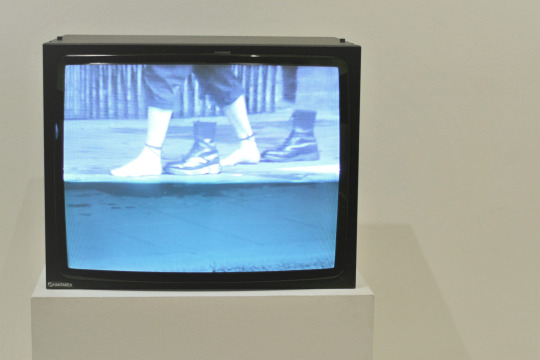
On Friday, I visited the Scottish National Gallery of Modern Art and attended their new, three-year spanning exhibition “NOW” which aims to showcase “the diversity of contemporary artistic practice”[1].
I was familiar with Mona Hatoum’s Roadworks from Performance Still, exhibited at the Tate Modern last year, an image that encapsulates her early performance work in Brixton. Contextualising this popular image - often googled as ‘Mona Hatoum doc martens’ - are multiple screens placed inside a small room beside their respective stills and information. Dividing this space is a bench that would require some severe shuffling in order to take in the surroundings, should you chose to sit, while standing still leaves the viewer with a claustrophobic sense of not knowing where to look as Hatoum drags and pulls herself across the screens.
Rivane Neuenschwander’s video piece, The Tenant , however, is shown in a large space in which I was alone in for the duration of its runtime. These differing displays perhaps allow for the recognition that while both The Tenant and Roadworks deal with the occupying of space, vulnerability and strength, where they differ, is that within the latter is a more obvious struggle. We are immersed more closely with the works to render us empathetic to Hatoum’s strain - we are unable to run from the works in the same way the artist is bound by the boots she is tied to. This sense of confined space in present in Hatoum’s other works, in which materials are replaced with their smaller, domestic counterparts in order to distort our experience with them into one of discomfort. Grater Divide (2002) works in much the same way as her similar, smaller-scale piece, Hair Necklace, marking the commonplace as a source of unease; while the titled pun in “grater” evokes the playfulness of the Dadaists, particularly Meret Oppenheim’s Object (1936).
Be it in a cheese grater, or Bourgeois-esque containment cages, there is an apparent lack of effort on Hatoum’s part to reconcile her installations with their space. Bold and unapologetic, in Grater Divide, we associate its shape with the sterile austerity of hospital wards, while the cold metal of it’s domestic subversion evokes a rhythm and texture that imposes on it’s suggested subject (cheese/the viewer). We wince at the thought.
In The Tenant, no such impositions are made: for ten minutes we watch this iridescent, immaculate bubble suggest occupancy, but not once does it touch the surfaces and disappear as anticipated. While Roadworks involves a confrontation by the artist in asserting her presence, inThe Tenant, the shape navigates the rooms as if a ghost, not yet allowed poltergeist permissions. Alluded to in the piece’s title, this is the same transitory residence that tenants experience in homes that are both there’s and not belonging to them. This foreignness is as relevant as ever in a culture that increasingly sees owning property, for most citizens, as the relic of a bygone era. Young people today are both haunted by debt and the ghosts resulting from it, leaving us in a state not dissimilar from Neuenshwander’s bubble, going about the world underpinned by an instability that could see us ready to burst at any minute.
#review#exhibition#research#art#mona hatoum#louise bourgeois#rivane neuenschwander#video#video art#installation
0 notes
Photo

Calling all lesbians, artists, photographers and lesbian allies! Nicole Jones is curating a project to promote lesbian visibility that needs your contributions. Find more information at coleyjones.com, and submit your photos to [email protected].
#lesbian#lesbians#art#photography#call for submissions#open call#lgbt#gay#gay women#women#feminism#radical feminism#feminist#visibility#representation#lesbian erasure#lesbian art#lesbian artists#artists on tumblr#artists on instagram#photographers on tumblr#photographers on instagram
32 notes
·
View notes
Photo
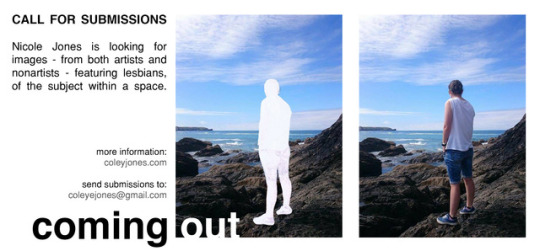
Coming Out aims to gather images from lesbians, or featuring lesbians, of the subject within a space. The project will promote lesbian visibility, but needs your submissions to go ahead!
More info at coleyjones.com. Send submissions to [email protected]. Please share and spread the word.
#lesbian#gay#lgbt#gay woman#gay women#lesbian erasure#radical feminism#radfem#feminism#female#women#art#call for submissions#call for artists#call for entries#open call#submission#artists of tumblr#photographers on tumblr#artist#photographer#photography#submit#exhibition
1 note
·
View note
Photo

Gwenneth Boelens - To point (or cover). 2014
mesh, metal, crayon
350 x 460 x 250 cm
20 notes
·
View notes
Text
Artist: Roni Horn

Roni Horn is an American artist born in 1955 in New York, where she has continued to live and work. Her glass sculptures, rough around the edges while smooth and water-like on top, are often repetitive and unassuming. This positioning, often in warehouse-esque gallery space, likens the work to Duchamp’s readymades, but intricacies in texture, light and form distinguishes them in their tons from the mass produced. This weight is contradicted by the diaphanous appearance of the pale and light figures, which bring to question notions of vulnerability and strength, themes also apparent in Horn’s portrait series. Femininity, too, is evoked in their straight and curved edges, or in the pastel blues and pinks. This, however, is a critical depiction: they are still, heavy and rooted, despite their first appearances. Lighting, be it from the window, or artificial, illuminates the oppositional nature of their qualities - there is a sort of stasis, as if unmelted ice.


In Thicket No. 2, Horn lifts a phrase from French philosopher Simone Weil, “to see a landscape as it is / when I am not there”. The second part of the phrase reads across the shorter edge, signifying the disruption and sought truth that the phrase implies. Titled “thicket”, the cold, harsh edges of the aluminium alloy material juxtapose the evoked imagery of bushes and foliage, arguably a statement on the intrusion of humans on landscape, one only visible when they “are not there”. This is similar to her glass sculptures in the sense both require closer inspection. Horn engages the audience with sculpture in the traditional sense, that is, 360° interaction, but her minimal works, placed on the floor without podiums, are in no way conventional. It is said that Horn’s work is poetic, for example, in her use of text and quote, but poetry is the distillation of much into little - this cannot be said for Horn’s large and heavy works. When we think of large sculpture, the likes of Louise Bourgeois and Jeff Koons come to mind; their scale is domineering, be it in it’s psychological weight or kitschy bounce. With most larger sculptures, their grandness is a deliberate aid to their impact. For Horn, and minimalism in general, scale is stripped of this impact, the piece instead reliant on its conceptual details.

Landscapes are one of Horn’s main preoccupations. In Mother, Wonder, she draws parallels between the curves of nature with the female form. In You Are The Weather, an Icelandic bather is likened to the elements. This duality - that the earth is a woman, or a woman is the earth, that an aluminium sculpture could be said to be a “thicket” - is something I seek to achieve in my own work. Lightness and weight, imposition and adaptation, irreverence and concern...I will continue to investigate “grow” with these in mind.
0 notes




